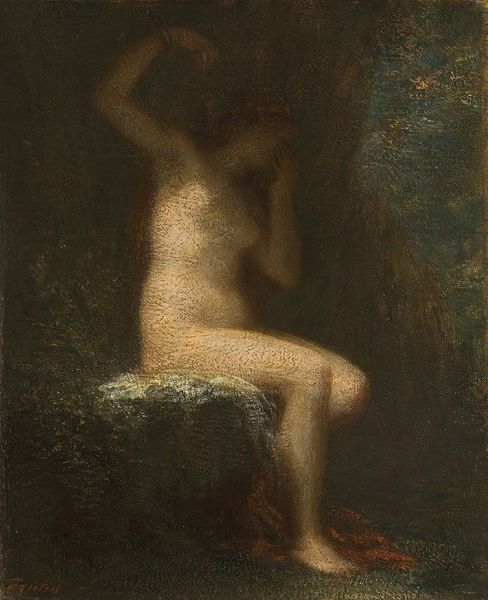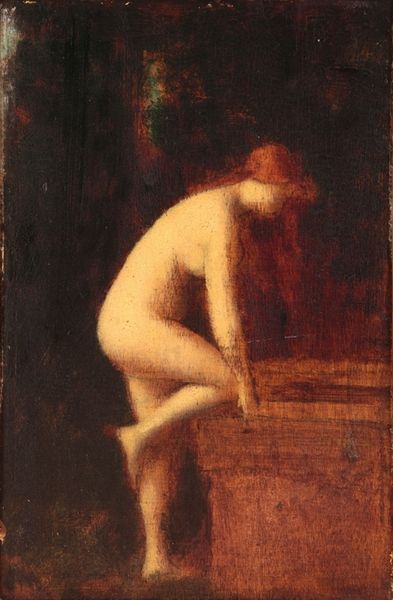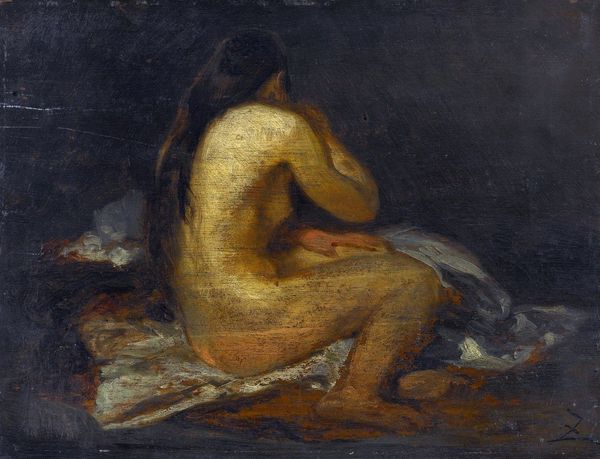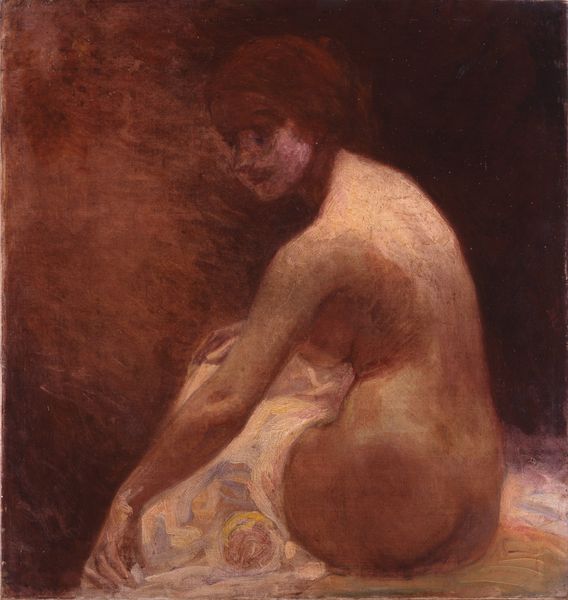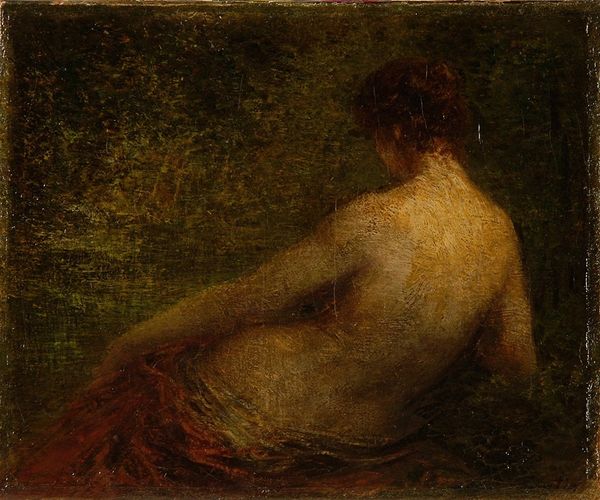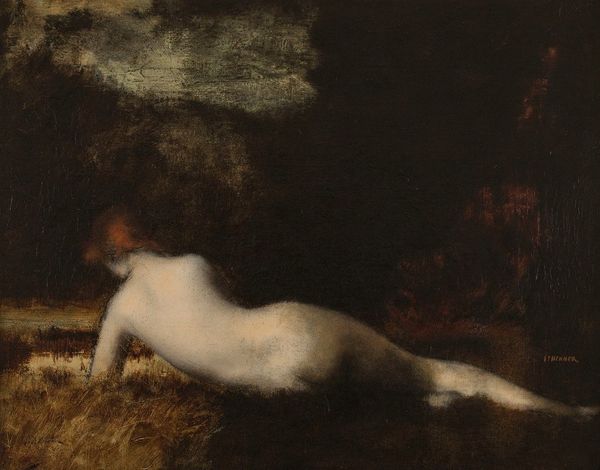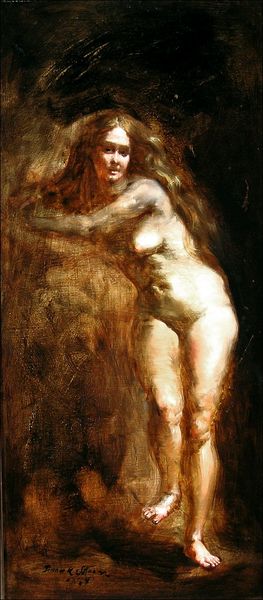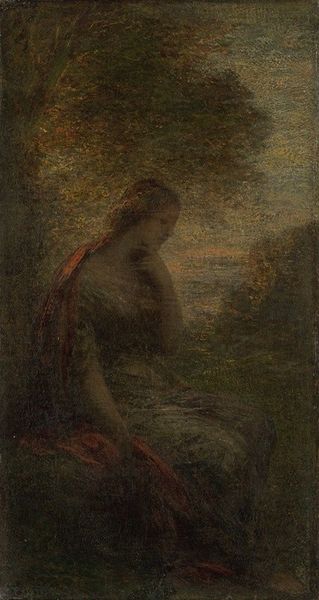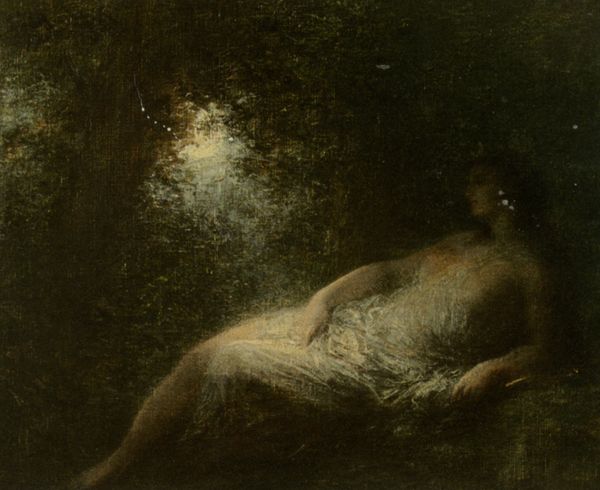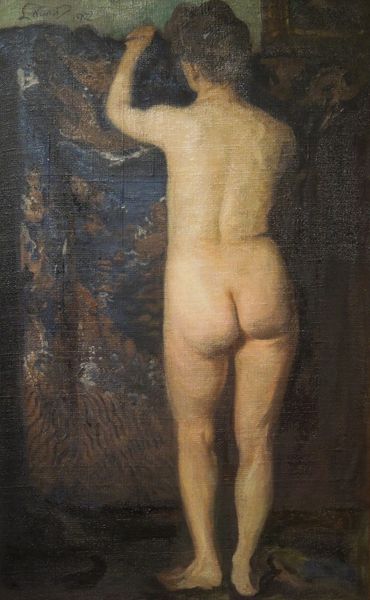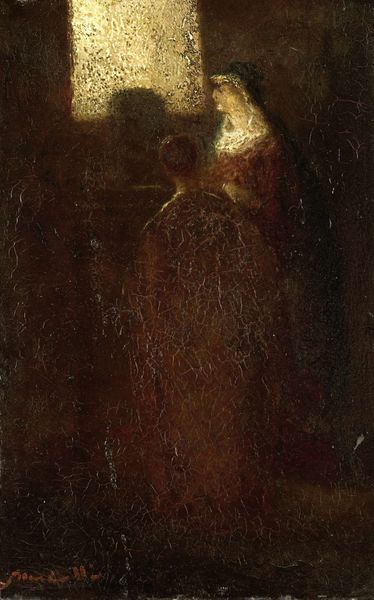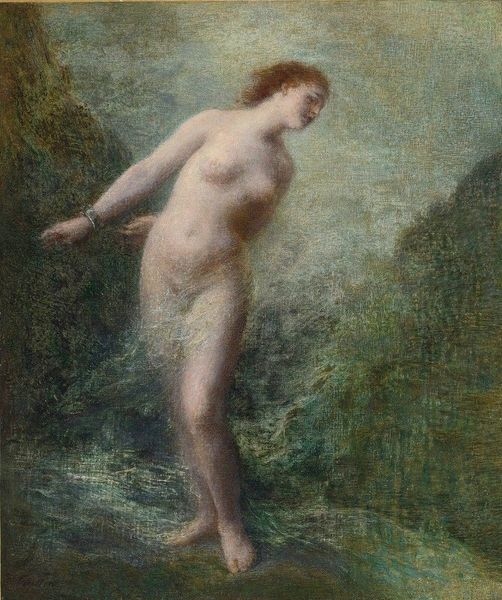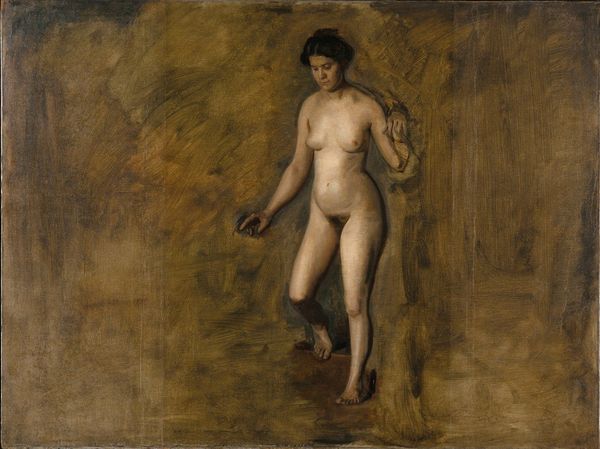
Dimensions: height 21.5 cm, width 16 cm, depth 6.7 cm
Copyright: Rijks Museum: Open Domain
Curator: Hippolyte Michaud’s oil on canvas, “Badende Vrouw,” executed sometime between 1840 and 1886. It is currently held in the Rijksmuseum. Editor: My first impression is one of melancholy. The dark background, combined with the subject's downward gaze, gives the piece a rather somber tone. Curator: Indeed. Michaud presents us with a nude figure, likely Venus, though devoid of any overt eroticism; more a study in form than an invitation to voyeurism. Note the almost sketch-like quality, the rapid brushstrokes suggestive of a captured moment, akin to Impressionist principles yet predating their full flowering. Editor: Precisely. That "unfinished" feel situates the work within the transition from Romanticism to more modern aesthetics. I’m also thinking of the broader societal context, though. Nudes in art, even within mythology, were often used as symbols of power or desire, depending on the audience. How might Michaud’s work have been received at the time, given the ambiguities? Curator: Good question. Without any familiar classical allegories, the artwork could easily generate public questioning regarding social norms. Yet observe how Michaud handles light and shadow, particularly the soft modelling of the figure's back and shoulders. It is rather academic but avoids any sense of idealized perfection. There’s a quiet naturalism there. Editor: So, perhaps a negotiation, reflecting the era's changing values? He engages with tradition, the nude form, while hinting at a turn toward observation, towards representing the human form, which aligns with the budding Realist movement? Curator: The subtle texture of the painting is really striking too. It shows so much in the cracks that naturally developed over time in the dark backdrop; the decay became almost a component of the art itself, giving a peculiar aging vibe. Editor: That's very evocative. Curator: On one hand, there’s an appreciation of the academic study of the human figure and on the other, he points to something fresh and forward-looking within it. Editor: Ultimately, the beauty, I think, lies in those tensions, echoing the societal shifts happening as the artist held his brush. Thank you for this new perspective!
Comments
No comments
Be the first to comment and join the conversation on the ultimate creative platform.
